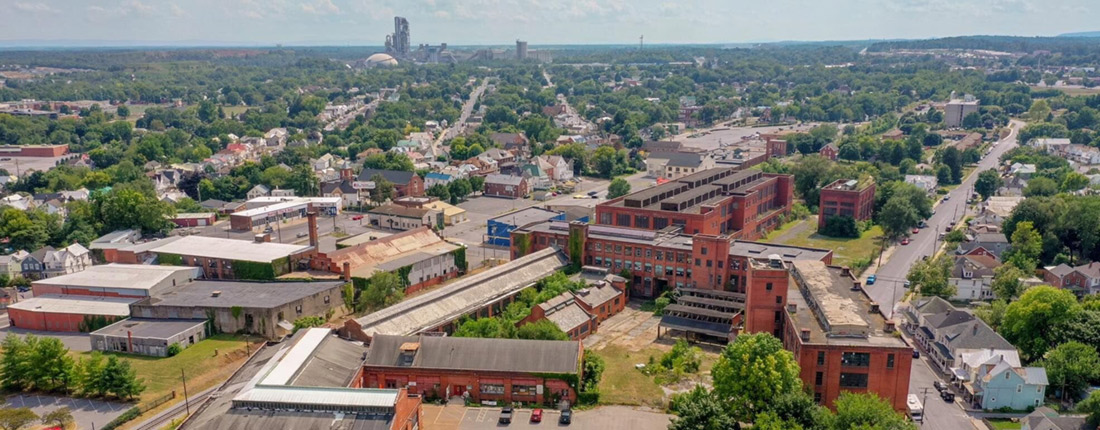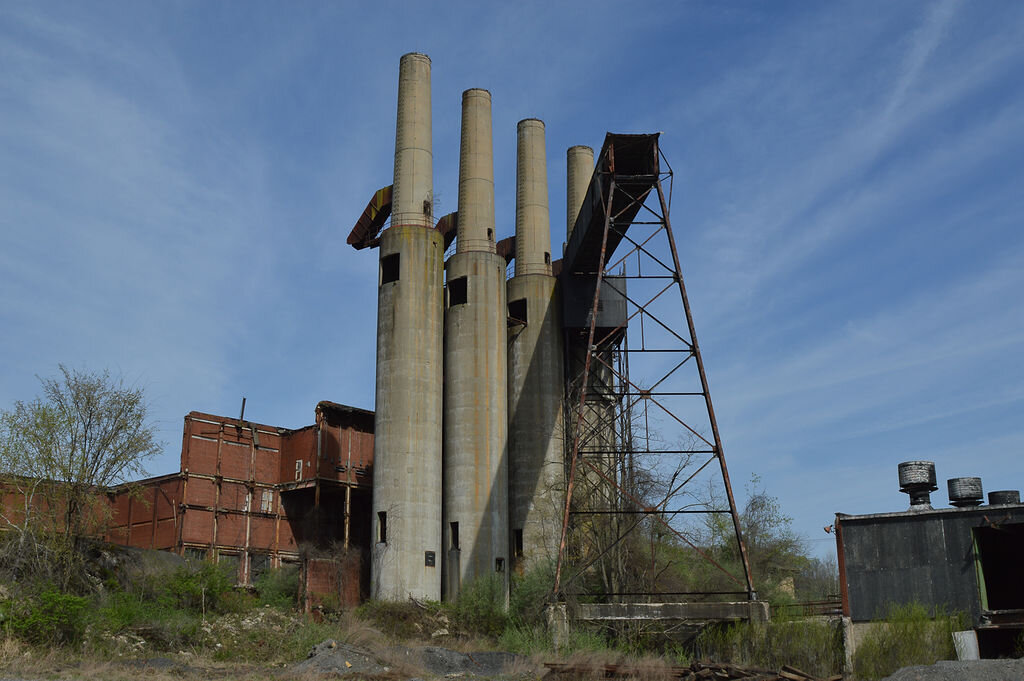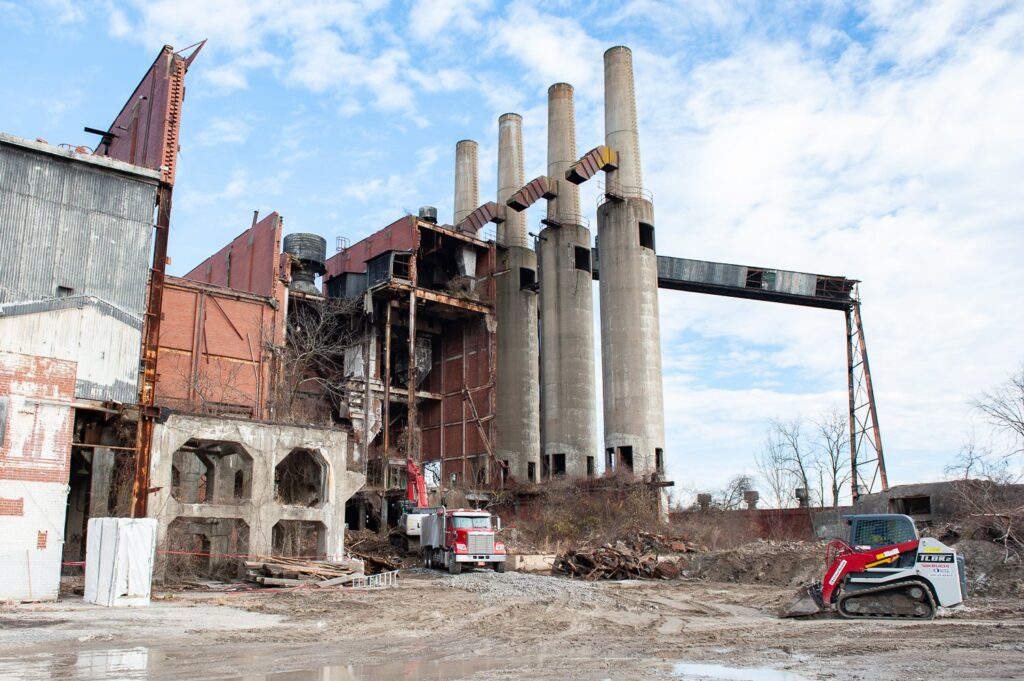Topic(s): Brownfields, Land Banks
What’s the Deal with Rural Land Banks? A Q&A with West Virginia Land Stewardship Corporation Executive Director Taylor Bennett
February 27, 2024

Addressing vacant, abandoned, and deteriorated (VAD) properties—what some call “blighted” properties—is not just a “city” problem. Across the country, small and rural communities grapple with economic challenges and an aging housing stock that leads to similar outcomes: a flood of VAD properties that threaten the health, safety, and resilience of these residents.
Land banks are a powerful tool to address vacant properties in rural communities, and West Virginia passed land bank enabling legislation in 2014. We spoke with Taylor Bennett, Executive Director of the West Virginia Land Stewardship Corporation (WVLSC). WVLSC operates as the statewide land bank for VAD properties, including those that have known or suspected environmental issues, and takes title to those properties to prepare them for redevelopment. Bennett has served as the Executive Director of WVLSC since 2021. In their previous role at the West Virginia Community Development Hub, Bennett worked as the primary statewide convener and advocate for land bank-based policies.
This interview has been edited for length and clarity.
Community Progress: When most people think about the types of communities that could use a land bank, they often think of major cities that used to be industrial powerhouses, like Detroit or Baltimore. What are some of the unique benefits a land bank can bring to a rural community?
Bennett: Like most of Appalachia, West Virginia is rebuilding an economy that was focused almost entirely on natural resource extraction for over a hundred years. The “why” and “when” wealth left our communities may be different from the major cities, but the outcome was very similar: the real estate market failed, and we were left with a glut of vacant, abandoned, and dilapidated properties that became the burden of local governments to address.
Land banks are a very flexible tool for addressing property abandonment and dilapidation. Major cities have used land banks to combat challenges from economic downturns and population loss. What we’re seeing in West Virginia is much the same, just adapted to our unique challenges. Because of the long-term nature of the disinvestment here, we have many small, chronically under-resourced communities that don’t have access to the resources to combat vacant and dilapidated properties, nor a local economy to support new developments.
To account for these limitations, we’re seeing land banks step in as the property developer. They can access funding through state and federal grants to address dilapidated properties, broker deals with developers, and put properties back into productive use. They also have special powers related to acquiring property through tax sale that can help get the most harmful abandoned properties into the hands of people who will reuse them productively, sooner.
CP: Since land banks in rural areas tend to be smaller, can you talk about some of the different roles that the staff have to play and how they balance them?
TB: Currently no local land bank in West Virginia has a dedicated full-time staff. Local governments usually designate someone from their planning office, demolition department, or code enforcement office to run the land bank in addition to their other responsibilities. This means local land bank staff carry a heavy workload and it can limit what they’re able to accomplish. However, because the person responsible for managing the land bank also works in these other areas, they bring that breadth of expertise to the table and can more efficiently coordinate with municipal and county government departments.
WVLSC provides as many additional resources for local land banks as possible, including convening monthly meetings to share best practices, training, and advocacy support. Soon we’ll also be offering additional legal support for land banks of local governments that do not have a fulltime city attorney.
CP: You played a key role in advocating for West Virginia’s land bank-enabling legislation. Can you share some lessons for advocates in other states who are trying to launch or strengthen their land banks?
TB: The story of land banking in West Virginia is really a story of research and collaboration. The land bank authorization legislation started with a partnership between the Abandoned Properties Coalition (APC), a statewide coalition of technical assistance providers who address dilapidated properties, and the West Virginia University Land Use and Sustainable Development Law Clinic, which was created to improve quality of life through land use planning.
As a result of working with many communities struggling under the weight of vacant, abandoned, and dilapidated properties, APC and the Law Clinic joined forces to develop a toolkit that would help local governments. Their research uncovered land banks as an effective tool in use elsewhere that they were confident could be adapted to a rural setting. The Law Clinic put together a host of educational materials for lawmakers to demonstrate how land banks could function in West Virginia, then APC drafted legislation and took on the task of educating legislators and running the bill at the Capitol. The bill ran in 2014 and passed that same year.
The major take aways that I have from this process are:
- Understand what solution will work best for the challenge and the context. The APC and the Law Clinic did quite a bit of research to make sure that land banking would be an effective tool for addressing property dilapidation and abandonment in West Virginia. In doing so, they ensured these efforts to pass land banking enabling legislation were not wasted.
- Gather compelling information and share it early. Before conducting advocacy at the Capitol, the APC and their partners made sure that they had solid information with which to educate legislators. In the months leading up to the legislative session, they traveled around to legislators’ home districts to meet with them and educate them on the efficacy of land banking.
- Speak with a unified voice. A mentor of mine told me when I first began working in West Virginia that nothing gets done unless it gets done in partnership with others. In advocacy work, I have found that to be particularly true. One of the first questions legislators will ask when you request their support is who else thinks your idea is a good one. Because the APC spent time building a robust team to advocate for the passage of land bank legislation, they were able to present a unified voice from many organizations, professionals in the field, and local government representatives all advocating for the same thing.

CP: One of the major areas WVLSC works in is taking ownership of brownfields properties—land that has been contaminated by hazardous waste. Can you talk about any projects there that you’re particularly excited about?
TB: One of WVLSC’s earliest functions was to help bridge the gap between federal resources for brownfield remediation and the many brownfields—former power plants, factories, mine land, etc.—in West Virginia. Our state is mountainous, and these sites are often centrally located on flat ground, a rare commodity. So, in terms of redevelopment value and promoting economic development, they really are some of the most important sites to put back into productive use.
WVLSC wrapped up a project at the Morgantown industrial park this past year on the site of the former Morgantown Ordinance Works, once an 826-acre chemical production facility run by DuPont. The site is affectionately known in the region as “The Smokestacks” because of four decommissioned smokestacks that tower over the Monongahela River. Our job was to remediate the former coal-fired power plant that had supplied electricity and a water-cooling system to this entire factory. Working with the US Environmental Protection Agency, our Department of Environmental Protection, local business owners, and the City of Morgantown, WVLSC remediated the property in a way that promoted economic growth and maintained the industrial heritage of the site.
Because the smokestacks didn’t pose any environmental concerns and were structurally sound, we were able to work with the future property owner to leave them in place. This preserved a piece of the city’s industrial legacy while making sure the rest of the property was cleaned up to EPA standards. The property now helps to support thousands of jobs as an integral part of the industrial park.
After finishing that project, WVLSC partnered with a local organization in the small town of Grafton to submit an EPA brownfield cleanup grant to remediate the former Hazel-Atlas glass plant along the Tygart River. If funds are awarded, the plan is for this property to become a community green space, hub for outdoor recreation and river access, as well as a center for retail and dining in the community.

Subscribe to join 14,000 community development leaders getting the latest resources from top experts on vacant property revitalization.
